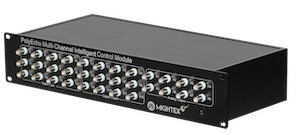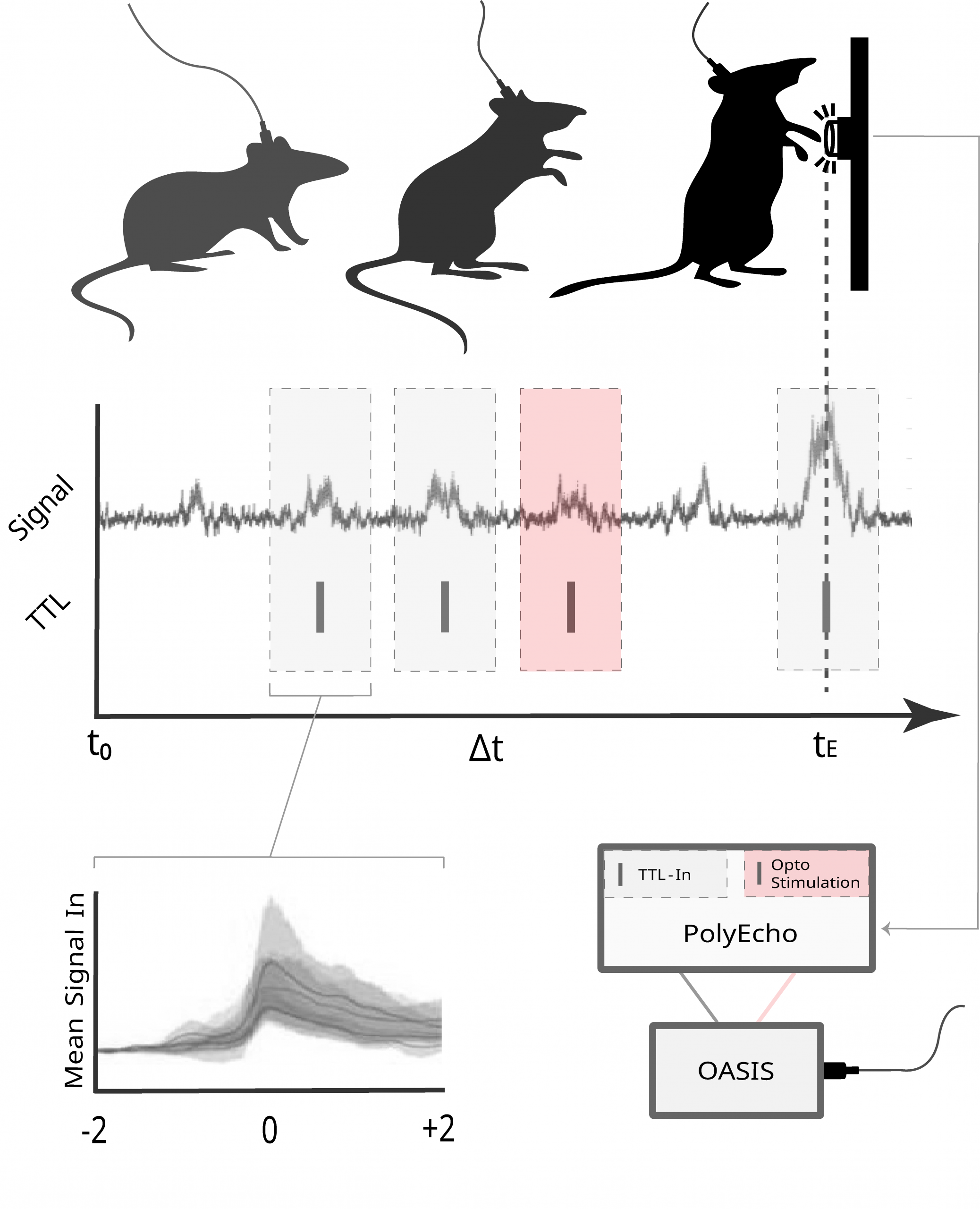
Experimental Synchronization using PolyEcho
Published on 2025/08/29
Research powered by
Mightex’s PolyEcho


Neuroscientists often rely on carefully designed behavioural experiments to understand how the brain executes decision-making, learning, motor activity, and more. In preclinical studies, these experiments usually employ behavioural tasks designed to examine individual psychological concepts such as motivation. These tasks measure specific actions—such as pressing a lever, navigating a maze, or responding to a stimulus. Each event, whether it’s a stimulus being presented or a response being made, is logged by hardware and software with a precise time marker. This allows scientists to track not only what happens, but also when it happens, revealing patterns such as intervals between actions, or how quickly animals learn new tasks. A powerful way to analyze these behaviours is in a temporally-specific manner. That is, by correlating the timing of behavioural events with neuronal activity, scientists can begin to make connections between brain and behaviour.

By synchronizing these behavioral time stamps with other biological data, like neurotransmitter fiber photometry or cellular resolution calcium imaging, researchers can uncover how brain activity aligns with observable actions. For example, a time stamp of when an animal presses a lever can be matched against calcium transient burst activity to determine how specific brain circuits contribute to decision-making. This temporal precision is especially important in preclinical experiments, where small differences in timing can reveal early indicators of neurological disorders or the effects of new treatments. Ultimately, using time stamps in behavioral experiments gives neuroscientists a robust, data-driven way to link brain function with behaviour, laying the groundwork for better understanding and treating brain-related conditions.
For experiments conducted with Mightex products in in vivo contexts, such as using the OASIS Implant for cellular resolution calcium imaging, time stamps can be logged and events responses generated by the future proof design of the PolyEcho Intelligent Control Module. This TTL driven I/O system allows users to integrate up to 12 digital inputs with Mightex hardware for complex time stamping and experimental integration. Moreover, these external inputs can be registered with PolyScan Software and control specific, flexible responses programmed using the 12 digital and 8 analog outputs of the PolyEcho. Using this system, neuroscientists can not only time stamp their imaging data for event related analysis but can initiate targeted optogenetics, LED waveforms, and data collection. Taken together, these techniques provide a powerful toolbox for neuroscientists to probe neural circuits and address their research questions.
To learn more about how the PolyEcho can help answer your research questions and facilitate event related analyses for your Mightex experiments learn more here
Catherine Thomas, PhD Senior Liaison and Development Scientist at Mightex